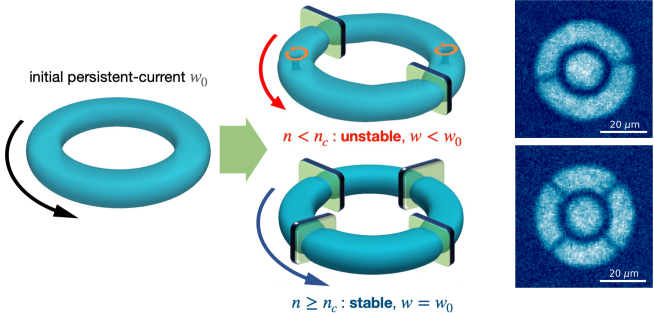 |
Arrays of Josephson junctions are at the forefront of research on quantum circuitry for quantum computing, simulation, and metrology. They provide a testing bed for exploring a variety of fundamental physical effects where macroscopic phase coherence, nonlinearities, and dissipative mechanisms compete. In this work we realize finite-circulation states in an atomtronic Josephson junction necklace, consisting of a tunable array of tunneling links in a ring-shaped superfluid. We study the stability diagram of the atomic flow by tuning both the circulation and the number of junctions. We predict theoretically and demonstrate experimentally that, counterintuitively, the atomic circuit withstands higher circulations (corresponding to higher critical currents) by increasing the number of Josephson links. The increased stability contrasts with the trend of the superfluid fraction – quantified by Leggett’s criterion – which instead decreases with the number of junctions and the corresponding density depletion. Our results demonstrate atomic superfluids in mesoscopic structured ring potentials as excellent candidates for atomtronics applications, with prospects towards the observation of non-trivial macroscopic superpositions of current states. L. Pezzè, K. Xhani, C. Daix et al. |
LAST NEWS
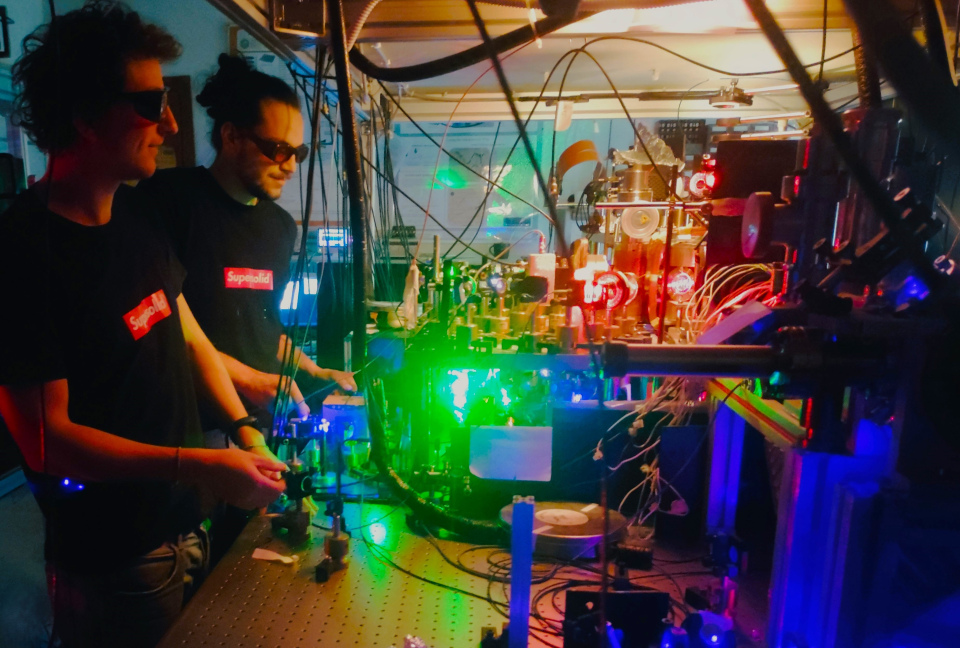 |
G. Biagioni et al. See also UNIFI press release |
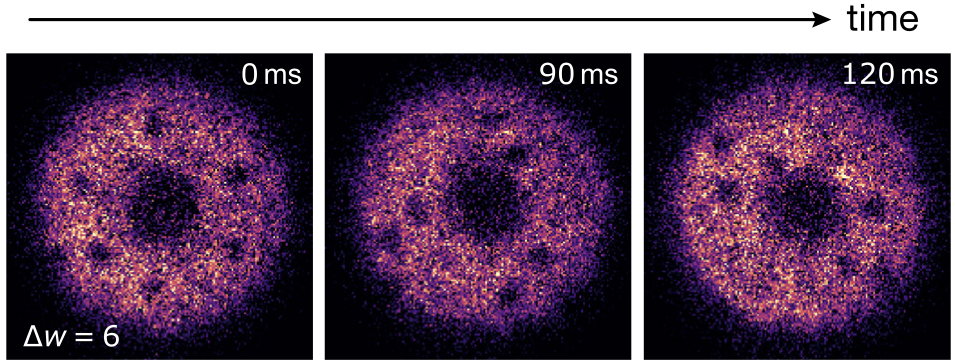 |
At the interface between two fluid layers in relative motion, infinitesimal fluctuations can be exponentially amplified, inducing vorticity and the breakdown of laminar flow. While shear-flow instabilities in classical fluids have been extensively observed in various contexts, controlled experiments in the presence of quantized circulation are quite rare. In our last work, we observe how the contact interface between two counter-rotating atomic superflows develops into an ordered circular array of quantized vortices, which loses stability and rolls up into vortex clusters. We extract the instability growth rates and find that they obey the same scaling relations across different superfluid regimes, ranging from weakly-interacting bosonic to strongly-correlated fermionic pair condensates. Our results establish connections between vortex arrays and shear-flow instabilities, suggesting a possible interpretation of the observed quantized vortex dynamics as a manifestation of the underlying unstable flow. Moreover, they open the way for exploring out-of-equilibrium phenomena such as vortex-matter phase transitions and the spontaneous emergence and decay of two-dimensional quantum turbulence. D. Henández-Rajkov et al. |
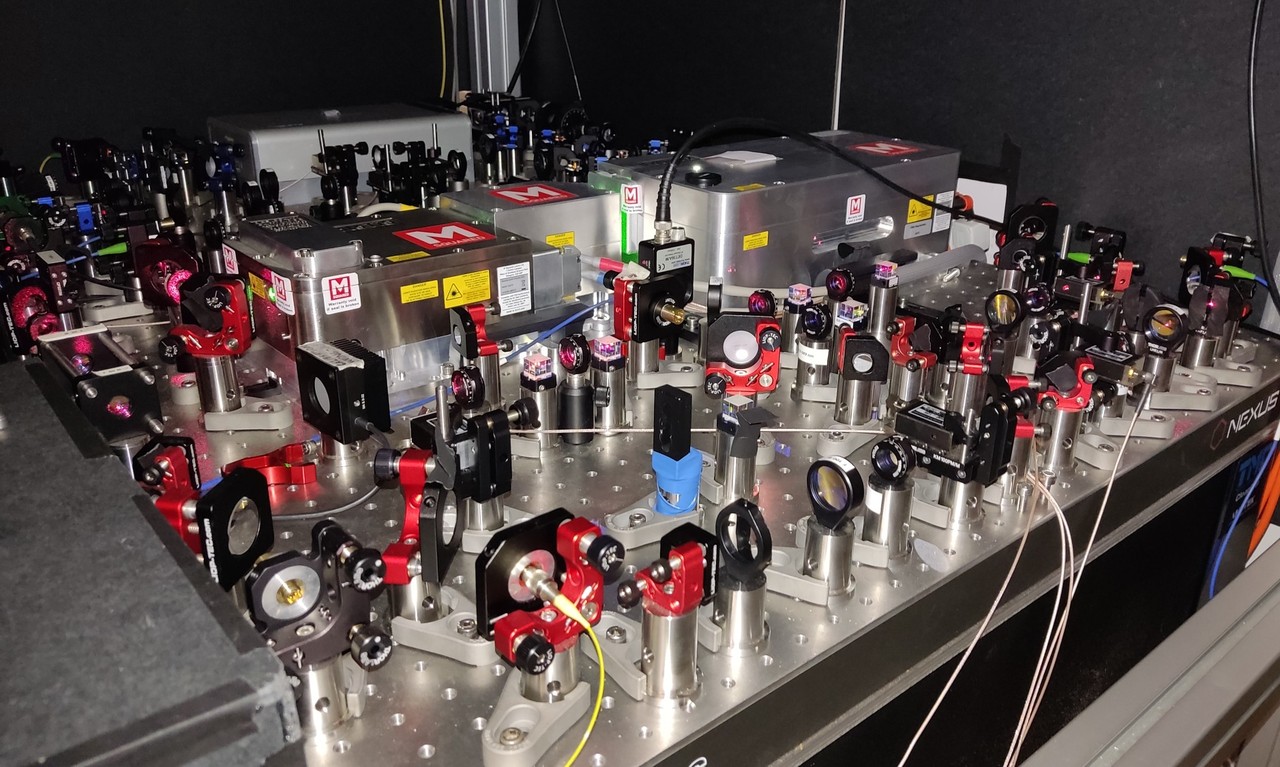 |
We have completed the optical setup for the 689 nm laser source that will be employed for further cool the Strontium atoms by a factor of 1000 in a red 3D MOT, in order to reach a temperature of few micro Kelvin. A significant challenge we faced was stabilizing the frequency of the red laser to a very stable and very high finesse ultra-low expansion cavity. |
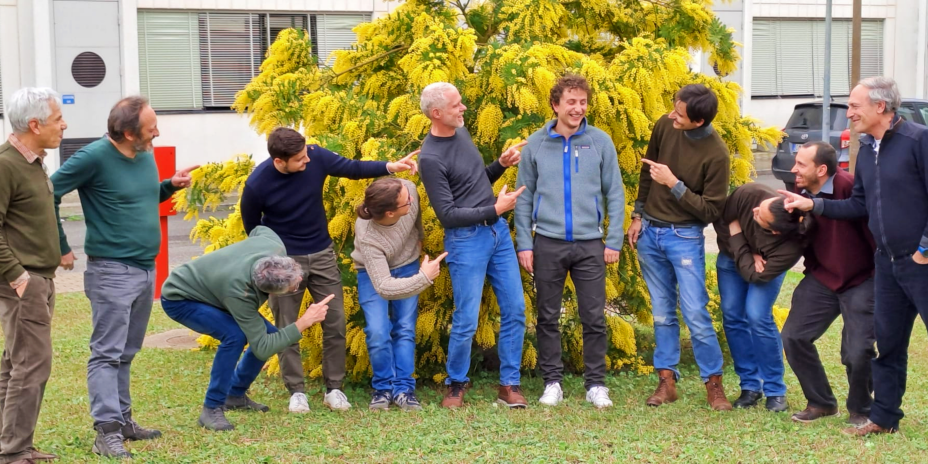 |
We are immensely proud of Giulio Biagioni, who has defended his doctoral thesis "Can a superfluid be solid? A study of the supersolid phase in a dipolar quantum gas", achieving the summa cum laude distinction. In the last few years, Giulio has given invaluable contributions to our research, enriching our group in countless ways and inspiring many experiments. We wish him all the success and fulfillment he deserves, and even more luck in his academic journey! See also the thesis |
